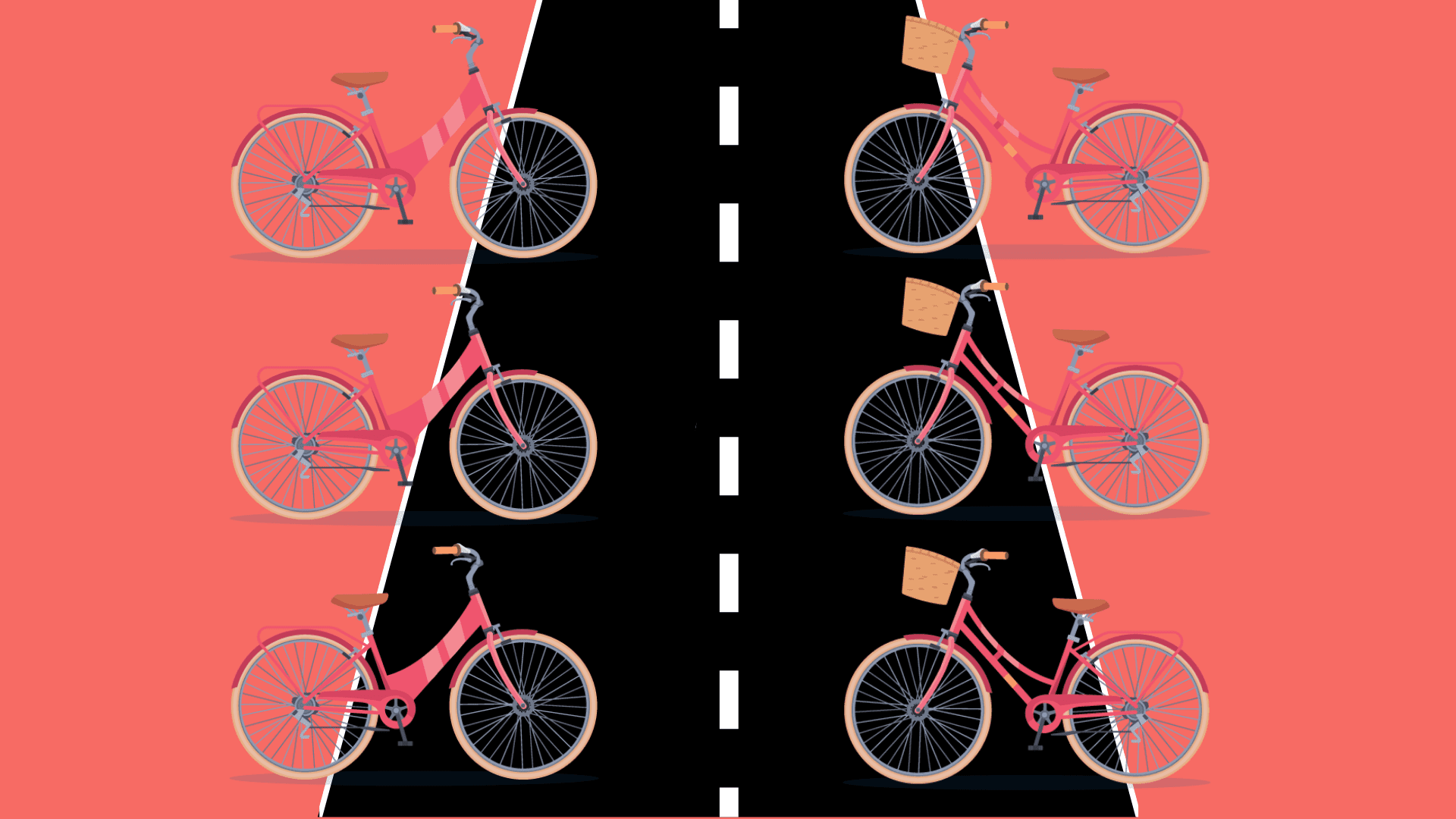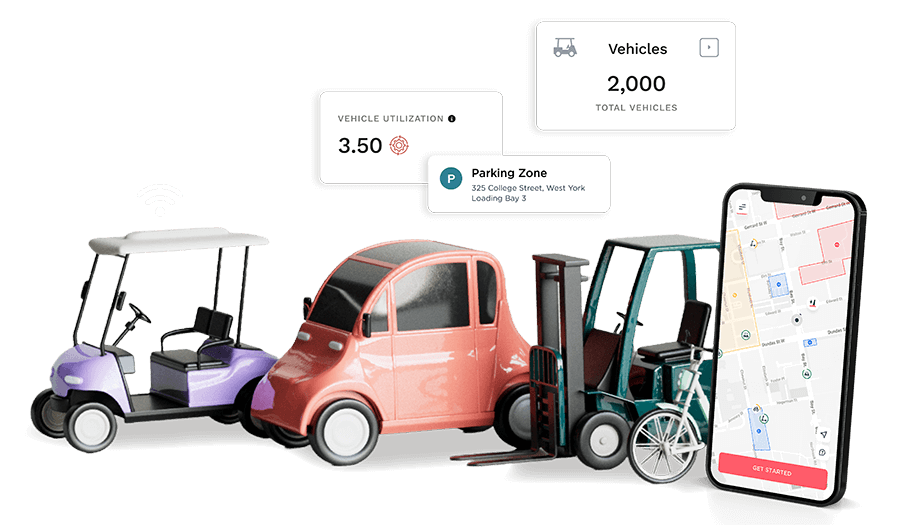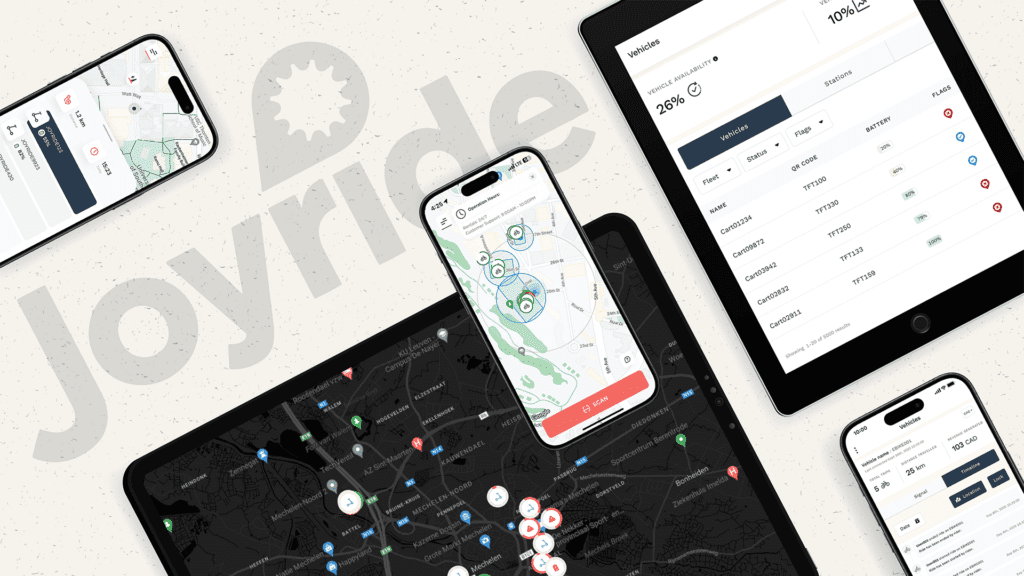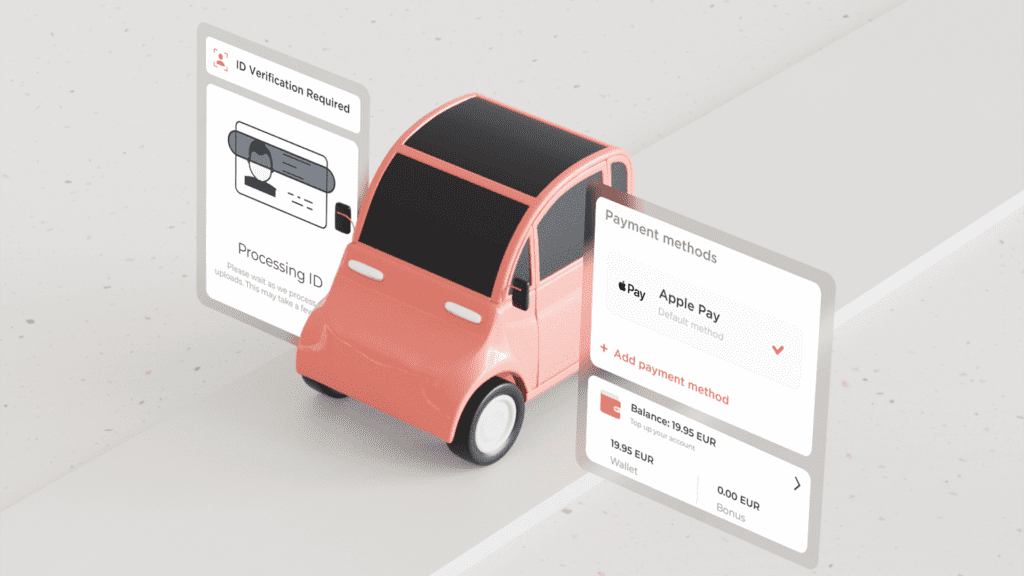The bicycle may seem like a basic form of transportation, but it’s really a complex solution to urban traffic problems. It became clear in 2021 that bicycles and other forms of micromobility can combat congestion and our CO2 conundrum. And in 2022, expect to see more cities and ambitious entrepreneurs doing something about it.
Why? The global rise in car-specific traffic congestion demonstrates the shortcomings of a city’s infrastructure. When car routes, parking and rules of the roads can’t move traffic forward in an efficient way, this wastes space, energy and significantly affects the air quality. Motor vehicles can move quickly when they have a clear path, but when you add in small lanes, pedestrians and city activity, it suddenly slows everyone down. On a bike, however, things can and do work differently.
Here are three ways that bicycles can solve urban traffic problems—and why operating your own shared bicycle system is also a profitable part of the solution.
1) Bicycles take up less space and energy
The key argument to why bicycles are part of the solution to urban traffic is its ability to decrease congestion by having fewer cars on the road. Many commuters have as little as one passenger per car, making trips inefficient and taking up both space on the road and burning unnecessary energy to run the vehicle.
Public transit is a great way to move several passengers in one vehicle, but studies show that people are not motivated to use public transit because they like to have control of their schedules. To the average commuter, finding the fastest routes to get from Point A to Point B is the biggest motivator when choosing a mode of transportation. Based on this logic, choosing a small vehicle like a pedal bike, e-bike or electric scooter is an optimal solution to lower the carbon emissions per ride and still follow your own schedule.
A new McKinsey survey suggests that consumers are welcoming micromobility solutions at unprecedented speeds.
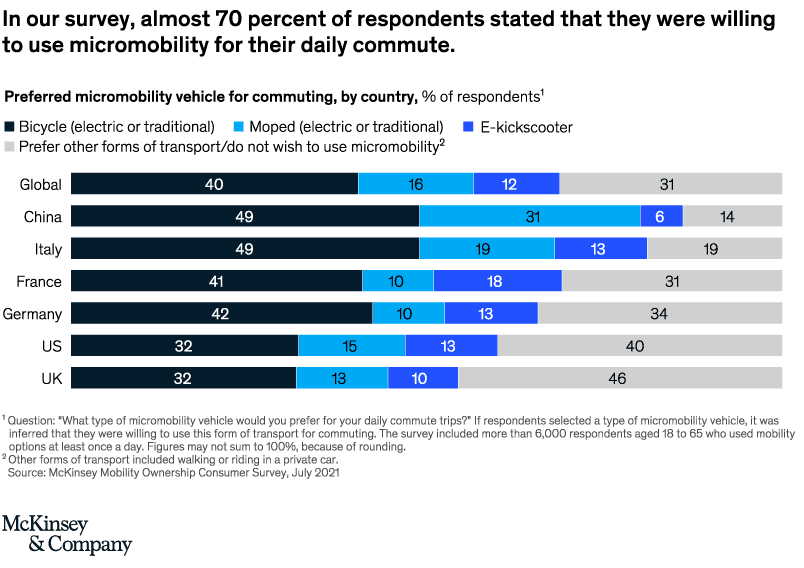
To further incentivize US commuters, there are new tax breaks for those who switch to sustainable transportation. Under President Joe Biden’s Build Back Better Bill, Americans can receive a 30% tax credit on purchases of an e-bike as an incentive to lower carbon emissions. Transportation changes are big contributors to President Biden’s plan for a net-zero emissions economy by 2050.
Owning a bike or e-bike is going to become more commonplace, but so will shared bike and e-bike schemes. The global bike-sharing market is anticipated to reach US$10 billion by 2025, registering a CAGR of about 14%. Many traditional sharing operators have started expanding their fleets to include electric bikes to sustain the growing competition in the bike-sharing market. Throw in technologies, such as GPS, consumer-ready mobile payments, sophisticated smart bike locks and seamless parking systems, and you have a sharing system that offers users flexible and affordable travel.
In fact, tech advancements in bike-sharing, coupled with the increase in government initiatives for the development of bike-sharing infrastructure, are some of the factors expected to offer lucrative opportunities for market growth during the forecasted period.
2) Building better infrastructure will help urban traffic problems
In order for people to make a change, they need to feel that micromobility will get them to their destination safely. Inner-city travel with a car means stop signs, lights, one-ways, no-turning zones, no parking zones, etc. Add in interactions like sharing the road with cyclists, stopping for pedestrians, and squeezing into one lane; congestion is inevitable.
In order to get better urban planning in your city to encourage micromobility, there needs to be a demand along with policies for the use of electric vehicles. Many urban infrastructures do not have enough bicycle lanes to support the incentive of micromobility. Riders experiencing a lack of safety are based on the lack of infrastructure investments for cyclists. Having properly protected bike lanes beyond a painted white line will increase the number of riders.
The Dutch Cycling Embassy reviewed this same concept and discovered the socio-economic benefits of creating cycling-friendly infrastructures. It decreases congestion, increases income for local businesses and develops sustainable habits. In the illustration below, you can see their 10 points of discovery and how traffic continues to decrease as safe separated bike lanes increase.
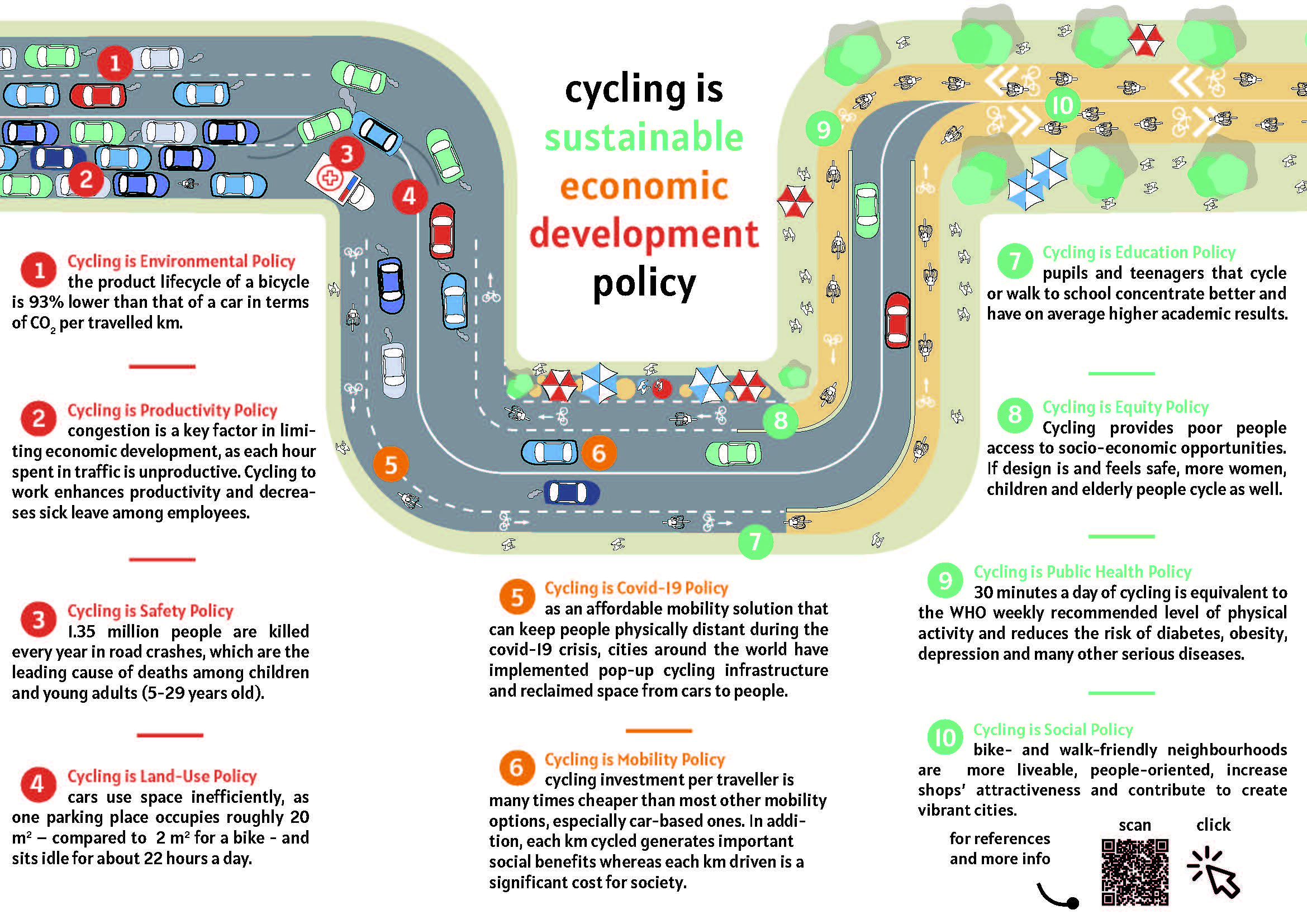
3) Micromobility fleets are paving the way for cyclists
If there are already shared micromobility fleets in your city, measures have been taken to invest in a better infrastructure in your city. For example, when someone wants to start a shared fleet of bikes or electric scooters, part of the startup process is to obtain permits. This level of permission sets the stage for the use of e-scooters or e-bikes in your city.
Software platforms like Joyride use technology to map out a city and find the safest routes to your destination. For example, Joyride’s backed geomapping feature can put limitations on things like speed or build boundaries to ensure riders experience safe trips while renting shared vehicles. Through shared bicycles, Joyride gathers data collected by the vehicle’s IoT device in order to ensure cycling safety and optimal fleet performance, which in turn leads to more customers for our operators.
While not specifically bike-related, public shared electric scooter companies do a lot of legwork in paving the way for more cycling. This is because they are required to:
- Obtain permits from the city
- Find an insurance provider that meets the permit requirements
- Develop either a free-floating model or invest in a docking station based on the city’s bylaws
- Educate their users on how to safely travel with vehicles
[Download our free guide on How To Launch A Scooter-Sharing System here.]
For every scooter or shared bike/e-bike company that launches a fleet, that’s one more city that becomes more micromobility friendly. Together, they are contributing solutions to the urban traffic problem for the long-term.
Final thoughts: Bicycles are at the core of Joyride’s mission
Joyride was established on the very notion that bikes can reduce urban congestion. Nearly a decade ago, Joyride Founder and CEO Vince Cifani used cycling as his main form of transportation when living in Toronto, though most of his trips were riddled with fear of being hit by a car due to limited bike lanes and high traffic This resulted in the collection of data to present to Toronto’s City Council.
“If the city just had better data of where the cyclists were riding, I could see myself and hundreds of other cyclists commuting every single day. If they knew where we were riding, they could build a better infrastructure.”
Vince built a tracking device for his bicycle and used the free city wifi to track his routes.
The data collection sparked new ideas on how to pair these insights with technology. Since then, Joyride has evolved from a hardware-tracking company to a full-suite software platform that enables anyone to instantly launch their own branded micromobility fleets. We as an organization stand for safety and sustainability, a fair and competitive marketplace, transparency and an innovative future, one ride at a time.

If you’re interested in contributing to the solution to urban traffic problems by growing your own micromobility fleet, contact us for more information on how to get started today.

